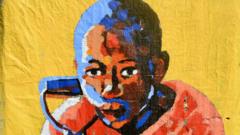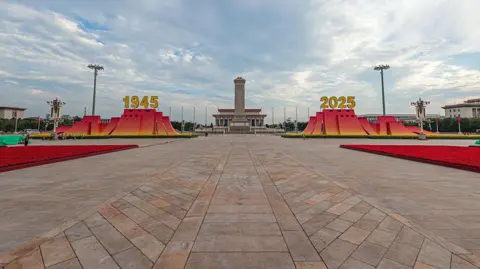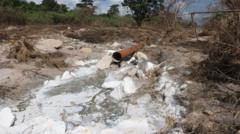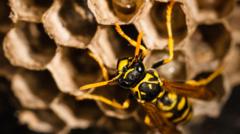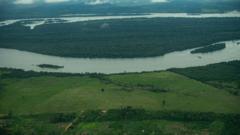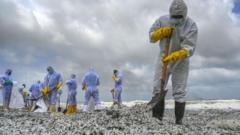In Zambia's Copperbelt, known for its infamous "black mountains," artist Stary Mwaba addresses the profound implications of the toxic mining legacy through his evocative artwork. These towering heaps of mining waste, remnants of a century of industrial activity, starkly contrast with the vibrant stories of local youth navigating their challenging realities.
From a young age, Mwaba was familiar with the risks posed by these hazardous sites; as he recalls, children referred to them as "mu danger," or "in danger." Today, young men brave this toxicity in search of copper ore to sell, often on dangerous and illegal terms, as they grapple with a staggering 45% youth unemployment rate in the region. For many, venturing into these dangerous sites is the only means of survival.
This month, Mwaba showcases his latest series at the Lusaka National Museum, focusing on the lives of miners in Kitwe's Wusakile neighborhood. He portrays the realities of these individuals, often working under "jerabos," gang masters extracting wealth from the earth. Using old newspapers as his canvas, Mwaba intertwines "grand narratives" with the "little narratives" of everyday lives, portraying both the harshness of their existence and the rich tapestry of their community.
His art is filled with poignant symbols of life amid hardship, including a piece depicting a miner with safety ropes and another showcasing local musicians. Mwaba’s work aims to illustrate how the consequences of industrial mining impact not only health and environment but also the very essence of community life.
The "black mountain," dating back to the 1930s, has long been a source of both environmental hazard and economic necessity. Mwaba's works resonate deeply, capturing the complex relationship people have with these lands, a relationship steeped in nostalgia and urgency. Through workshops, he collects stories of resilience, bringing light to the struggles faced by those who risk everything for the meager rewards of mining.
In the wake of environmental catastrophes, including the recent troubling spill from a Chinese-owned mine, Mwaba’s work has taken on added significance. He reflects on the past, stating that returning to his childhood home was emotionally overwhelming—proof that transformations wrought by mining have shifted both landscapes and lives. His art serves as a voice for the marginalized and a call for deeper reflection on the legacy of exploitation.
By highlighting the humanity within these harsh circumstances, Mwaba not only tells stories of struggle and survival but also ignites dialogue about the future of those living in the shadow of the black mountain. The fragility of life reflected in his works resonates as a powerful indictment of the socioeconomic realities shaped by Zambia’s mining industry.

